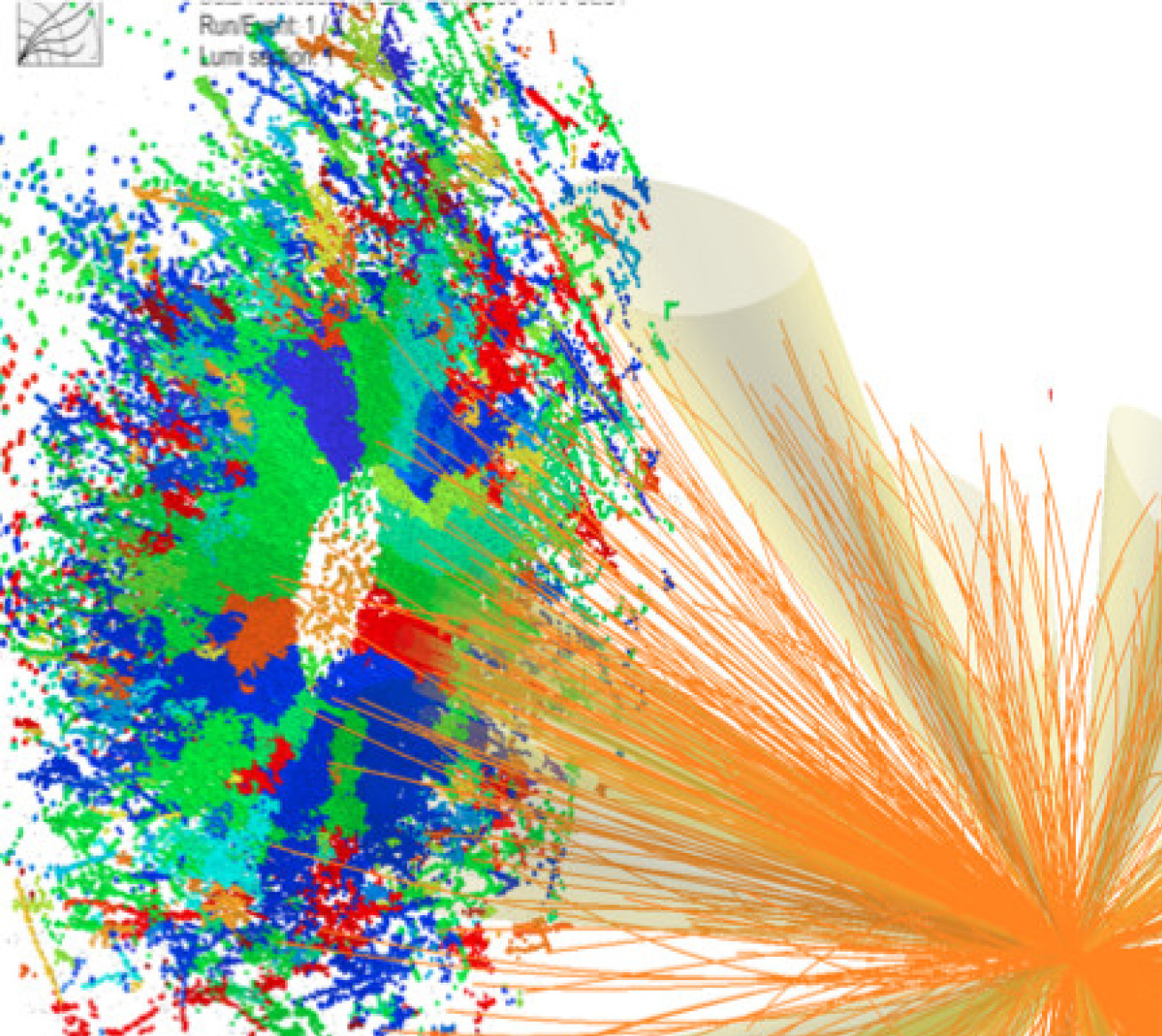High-Granularity Endcap Calorimeter (HGcal)
The harsher background conditions at the HL-LHC will make precise measurements of particle energies more difficult than in the current detector, particularly in the forward regions where most of the extra background is produced. This motivates the replacement of the forward region ("endcap") calorimeter with a new design better able to handle the very high backgrounds. The chosen solution is to build a calorimeter with very high granularity, meaning a large number of independent channels, with each channel covering a small area. This will allow the accurate measurement of the particle energy deposits, even in high background, as the signal and background energies will tend to be in different channels.
The High Granularity Calorimeter (HGCAL) is a sampling calorimeter, where the energy deposits are detected in layers interspersed between sheets of dense absorber, where the latter are to make the incoming particles create showers. The detecting layers use silicon in the higher radiation regions and scintillator elsewhere. In both types of detectors, charged particles excite electrons in the detector material as they pass through. In silicon, this causes a current which can be measured. In scintillator, this causes the material to emit light as the atoms de-excite and this can also be measured. Each of the two HGCAL endcaps will have 48 detecting layers per endcap and a total of around 5 million independent detection channels.

This granularity will give an extremely detailed view of the particles going through the HGCAL, allowing the particles to be reconstructed later in fine detail. However, the resulting data volume will be very large; the HGCAL would generate around 1 PByte/s of data if it read out all the data produced. To reduce this rate, the Level-1 trigger will select around 2% of the data for further analysis. This trigger will make its decisions based on the signals seen in the CMS detector, including the HGCAL itself. Hence, the HGCAL will need specific trigger electronics to read out and interpret a reduced set of the HGCAL data for every HL-LHC collision. This trigger electronics must perform a sophisticated data reconstruction using the HGCAL energy deposits to estimate the number of incoming particles, as well as the energy, position and shower characteristics for each particle. The incoming data to the HGCAL trigger electronics will be around 10 TBytes/s and the data for each collision will have to be processed within 5μs. This processing will be performed in around 250 FPGAs mounted on Serenity boards. The Imperial CMS team is responsible for the design, production and installation of the HGCAL trigger electronics.